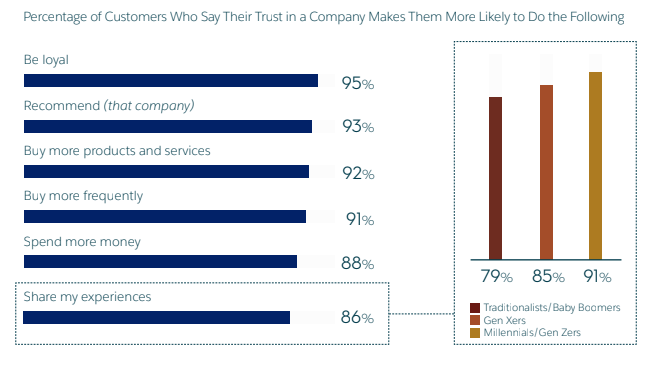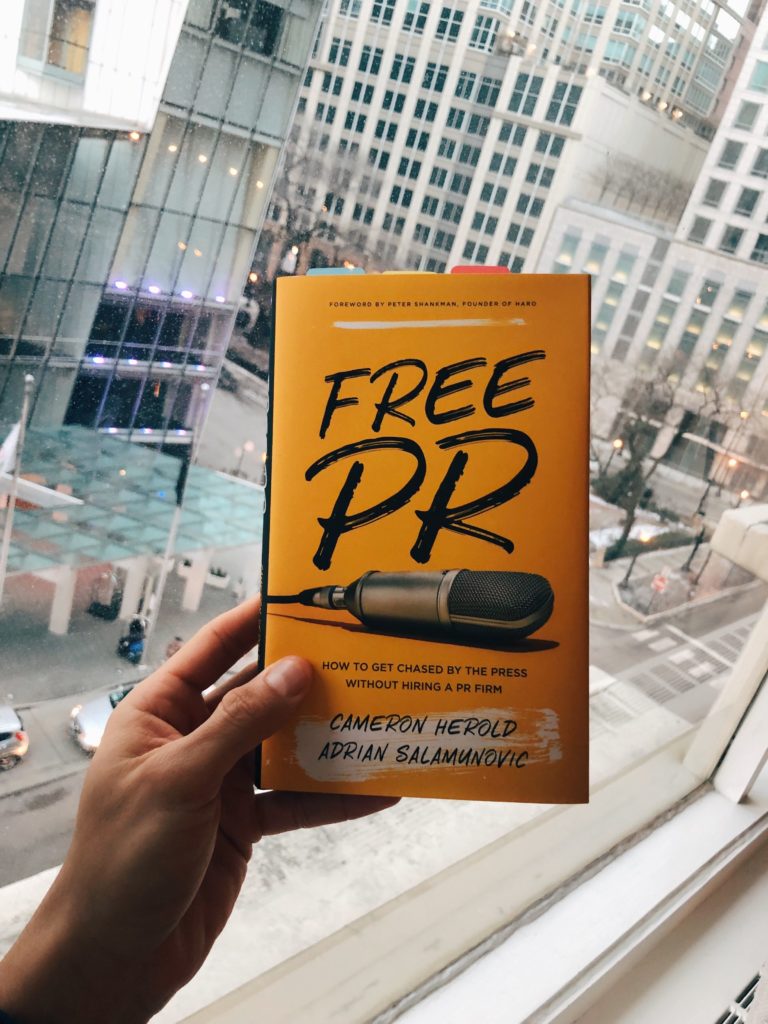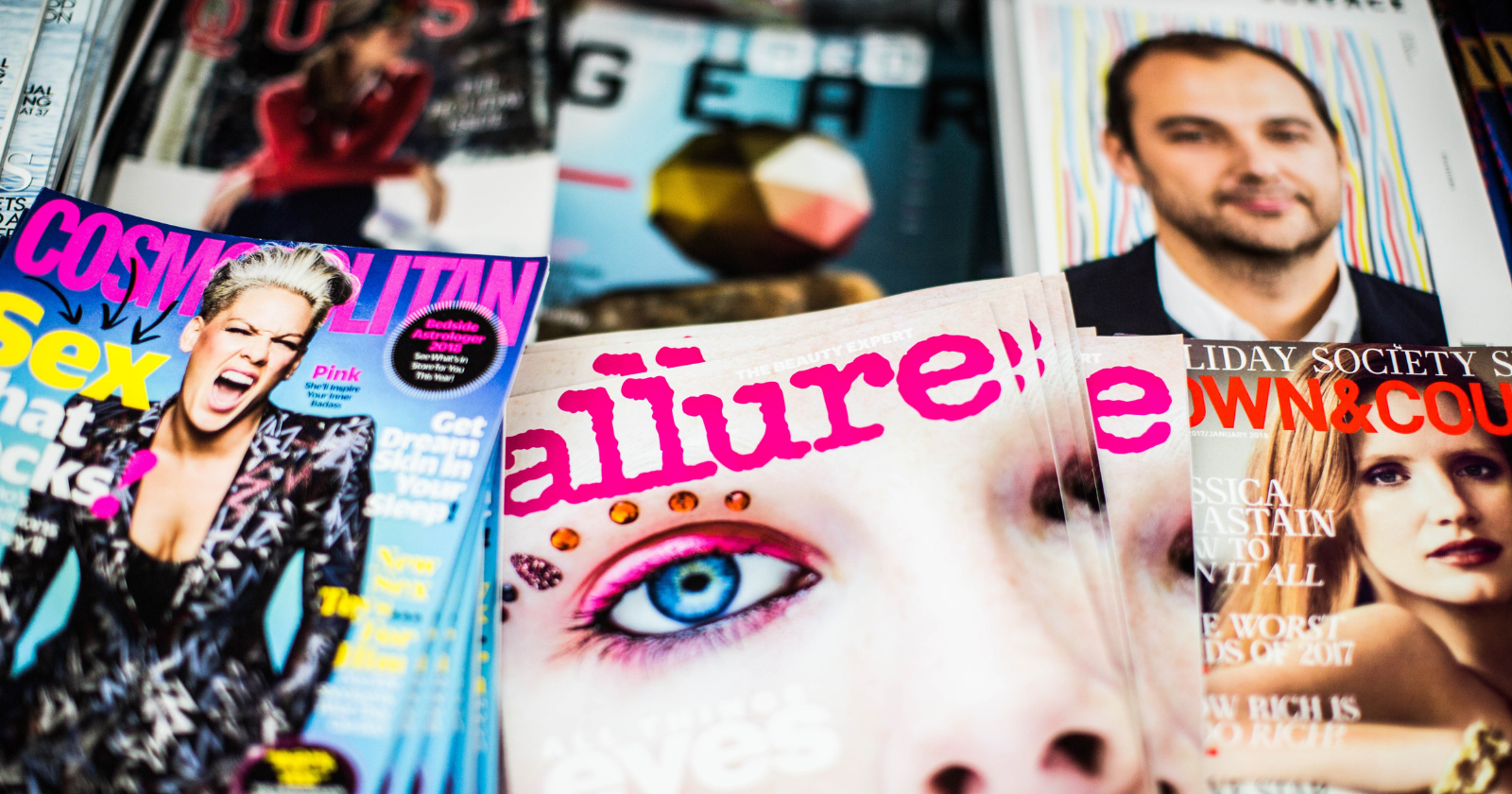Can PR make your brand famous?
Just ask Cameron Herold and Adrian Salamunovic, two entrepreneurs who hacked their way to getting publicity without spending a dime on a fancy public relations firm or advertising.
The Wall Street Journal, Wired, and Fortune, to name a few, all ran stories on their startups, thanks to being just plain real and authentic.
Their just-released book “Free PR” walks through how to get the attention of journalists, bloggers, reporters and get in front of the masses without a mega-budget or a PR background.
History of PR
Public relations dates back to the early 1900s when publicity boards were formed to influence public opinion and eventually journalists.
Press releases were used to communicate to journalists in crisis situations which helped repair reputations and resulted in positive press in the mid-1900s.
As radio and TV evolved as media outlets, PR became a more critical communication part of a company. Journalists were the gatekeepers of what made the headline news and who was used as a source.
Why PR?
Public relations is considered a third-party endorsement versus an ad or sponsored content, which is obviously paid.
Unlike ads, which stop when the paid campaign ends, public relations keeps on giving. This can be in the form of referring traffic, inbound authority links, branding, and more.
It’s been shown that media breeds media. When your brand gets mentioned once in the media, more media tend to flock and it can be a domino effect.
In an era when consumer trust is at a low, positive public relations results build credibility and credibility builds trust.
Salesforce reports that 95 percent of customers are more likely to be loyal to a company they trust while 92 percent are more likely to purchase additional products and services from trusted businesses.

Old School Meets New School Opportunities
Today’s news cycles are 24/7. Journalists, media outlets, search engines, and social media channels are hungry for good content.
We’ve come a long way from two to three TV networks and a few radio and print outlets in each market.
 You don’t need to pay Madison Avenue prices for Wall Street Journal results.
You don’t need to pay Madison Avenue prices for Wall Street Journal results.The number of media outlets is massive and growing while the number of journalists and staffing is decreasing due to budget cuts. In the last decade, newsrooms have shed over 20,000 jobs, representing a 39 percent decline.
For example, BuzzFeed publishes more than 200 stories and videos a day while The Washington Post outputs more than 500 videos and posts a day. There are more than 600,000 podcasts and 505 million blogs. More than 7,000 magazines in the US and 1400 plus newspapers. More than 1,700 TV stations exist in the US.
Journalists are expected to do more for less. This includes finding artwork and multimedia.
This leaves a huge opportunity for potential media coverage with the right PR savviness and tactics.
So whether you are a digital marketer, startup, solopreneur, nonprofit, or any size organization – check out these PR tips to scale your public relations results on any budget.
The Right Audience & Angles
You must know your audience and angle before you can skip to pitching your story to the media.
If you have your audience personas in place you should know what publications they are mostly reading. Once you know the publications then you can research who covers the types of story that fit your brand’s story.
Discover what your prospect is interested in, then provide it. It’s business 101.
“If you can’t tell the journalist why their audience will care then you are not ready to pitch,” Herold and Salamunovic said.
A story angle is the spin you put on your product or service that makes it interesting or compelling.
Bad Pitch: “I want you to write a story about an app I’m launching next week.”
Good Pitch: “We are launching a new app for entrepreneurs that saves an hour a day in productivity, increases happiness in the workplace, and decreases stress.”
The best story angles come from knowing your unique value proposition, or what makes your brand unique or innovative to your industry. This will help frame your story idea into categories, which could include:
- Announcements: These include new products or new hires.
- Evergreen: These are timeless ideas such as “how to write a book in 30 days.”
- Seasonal: Tied to specific holidays or events such as the Super Bowl or elections.
- Events: Such as if your brand is part of SXSW or industry conference such as Pubcon.
Perfect Pitches & Press Releases for Free PR
There is an old saying, “the press release is dead, long live the press release.”
Contrary to popular belief, the press release is not dead, it’s actually very much alive and well. A press release answers the critical questions about your brand’s news: the who, what, when, where, and why.
Since the revolution of the digital age, many have come to believe that the only message that matters is the one that you put out online. Yet, they still want coverage in Forbes, The New York Times, NBC, and local media.
If those are the goals that align with your business needs, then a well-written, attention-grabbing press release is your golden ticket to getting found in search and social.
Pitching
Pitching a story to the media does not require a PR degree, but it does help to be a good writer, researcher, and connector
You need to be able to sell what the journalists and media are buying in a way that’s helpful, relevant, and timely.
- Make sure it is personalized and tailored to the journalist.
- Keep it short and to the point without fluff.
- Before you start to pitch, follow the reporter on Twitter and start interacting and building that relationship.
#SocialPRSecret to Pitching Peeves
I caught up with Destiny Lalane, a freelance writer for publications including Elite Daily, Thought Catalog, PaleoHacks, Jopwell, and Glassdoor.
“My two biggest pet peeves when it comes to receiving pitches from brands are the lack of relevance and the sheer unwillingness to build a relationship. Along with many other journalists, I have a digital footprint. A quick Google search paired with 10 minutes of your time and you’ll find something about me that is relatable to your client.
This can help segue a trustworthy hello into an introduction to your client. Building relationships is so important in general, but especially when it comes to press.
Follow relevant journalists on social media even if they only have a few hundred followers on Instagram, share their stories, like their tweets/photos even if they didn’t mention your client this month or this quarter. It’s an easy way to stay on top of their mind, especially as you prepare for another round of outreach.”
Anatomy of a Press Release
The press release is not a marketing document and should not be written like one. If you write like a journalist you will get noticed by a journalist.
Get the who, what, where, when and how covered and keep it to 400 words with more details on your website. Below are key parts of a press release from start to finish.
- Headline (make sure you have keywords front-loaded).
- Sub-Headline (optional).
- Visual: Include a logo, an image at a minimum and a video if possible.
- Location and Release Date.
- Summary (have a link with full URL to the company).
- Problem.
- Solution.
- Data and Market Facts.
- Your Quote (can also include influencer, customer, or partner quote).
- Closing and call to action.
- Boilerplate.
- Media contact info: According to a study done by TEK Group, the media contact info is the most wanted piece of info when visiting a brand’s website. Do you have a media contact listed on your website?
Visuals
Journalists said they “always” or “often” use multimedia elements 70.5 percent of the time.
In addition, studies show that press release distributed with images and video gain more visibility in search and referring traffic.
- Photography: Invest in a variety of photography and get creative beyond headshots. The better the photography the easier you make the life of a journalist. Take action shots in both horizontal and vertical.
- Infographics: Turning data into a visual also wine the hearts and attention of the media including social media, search, and traditional media.
- Videos: Your iPhone camera is today’s videographer and your apps hold the key to some of the easiest and best editing – no skills required. Don’t be afraid to get creative with video, no budget required.
Optimization
Optimizing your press release doesn’t mean making it all spammy with an overdose of keywords. If you are doing versions on social media make sure you have relevant tags including:
- Keywords: Make sure you keep in mind how your audience is searching and write with those keyword phrases in mind.
- Image file names: Keep in mind the power and influence of Google image search.
- Links for referring traffic: Make sure you follow Google best practices, things change.
- Shareable: How will your news share on social media? Is the visual shareworthy and does it tell a story?
Distribution
- Paid: Ereleases, PR Newswire or Business wire.
- Email: Let your email subscribers know what’s happening in a simple version that links to the full story on your website
- Google My Business: Dedicate your GMB posts to reporting news and get controlled visibility on page one of Google. You can even add a video or image – make it pop and stand out.
- Custom versions for your website’s online newsroom, Linkedin, Medium.
- Multiple lengths: 160 characters, 1 paragraph.
- Social media versions: Create unique versions of your press release for each network. If your audience is on Instagram, make sure you break news first on the channel that matter most to your audience. Instagram is catching up to Twitter for breaking news.
- Media list: Make sure your media list is personalized and groomed for each pitch. You don’t have to be BFF with a journalist to get a story, you just need to make their lives easier.
Ready for It?
Ready to start or relaunch your brand’s journey to getting free publicity, good links and build credibility?
Grab your shades and watch the fame grow, just remember this process is one built with momentum. There is no such thing as the “pause campaign” button.
Public relations is an “always on” process.
More Resources:
- 7 Ways to Improve Your Brand Perception with Reputation Management
- 17 Really Simple Ways to Get More Media Coverage from Search & Social
- Why PR Is Crucial to SEO & 11 Ways to Get Coverage
Image Credits
Featured Image: Unsplash
Screenshot and in-post image taken by author, February 2019




